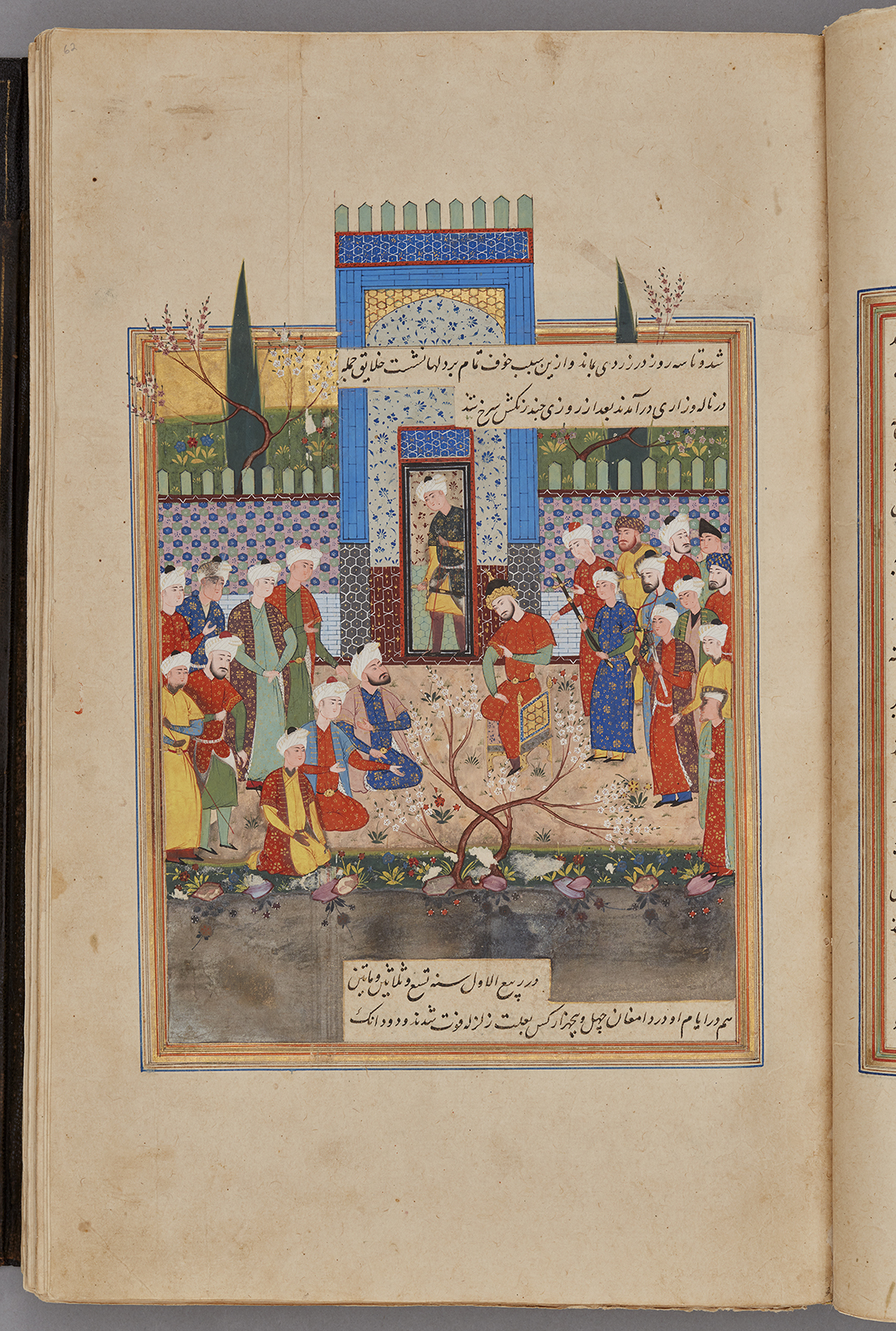Click on the image to zoom
Mutawakkil at the banks of the Tigris, Folio from a manuscript of Nigaristan
- Accession Number:AKM272.f62r
- Creator:Author: Ahmad b. Muhammad Ghaffari, Persian, died 1567 Scribe: Ahmad al-Shirazi
- Place:Iran, Shiraz (probably)
- Dimensions:38.7 cm × 25 cm × 6.4 cm
- Date:1573-74 CE/980 AH/AH 980
- Materials and Technique:Ink, opaque watercolour, and gold on paper
The miniature painting "Mutawakkil at the banks of the Tigris" is from an intact manuscript of Kitab-i Nigaristan, a collection of anecdotes and historical incidents written in prose by the historian and scholar Ahmad Muhammad Ghaffari (1504–1567/68) of Kashan in 1551–2. This illustrated manuscript, dated 1573, was probably produced in a Shiraz workshop.
See AKM272 for more information about the manuscript and links to the other illustrations.
Further Reading
This illustration shows a royal audience at the bank of the River Tigris. The composition is divided into three horizonal segments. The lowest segment shows a river. Figures fill the middle segment, and a bearded man wearing a crown occupies the centre. The upper segment of the painting shows a wall covered with decorative tiles and an archway, in which a man—probably an attendant—stands.
The text of the Nigaristan indicates that this scene depicts a banquet at the banks of the Tigris River before a massive flood. It also makes additional references to other historic catastrophes. According to Ibn Juwzi, the Tigris flooded during the reign of Caliph Mutawakkil, and it served as an omen to predict an upcoming catastrophe: the Mongol invasion. Before the flood, the water of the Tigris was said to have become yellow for three days and then red like blood.
As in other illustrations of water in the Nigaristan, the water of the river is painted here with silver pigments, which after a while oxidize and turn black. The choice of silver suggests that the scene takes place before the water turns red, as described by the omen.
- Elika Palenzona-Djalili
References
Canby, Sheila. Persian Painting. London: British Museum, 1993. ISBN: 9780714114590
Note: This online resource is reviewed and updated on an ongoing basis. We are committed to improving this information and will revise and update knowledge about this object as it becomes available.


